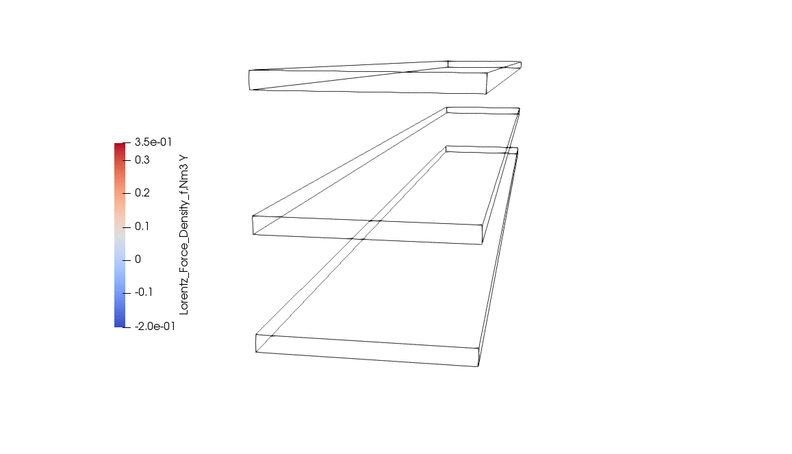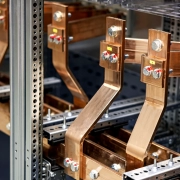Analyzing Lorentz force in a 3-phase busbar during short-circuit using CENOS simulation software
Short circuits in electrical systems can result in significant damage to infrastructure if not analyzed and mitigated correctly. One crucial phenomenon engineers must account for is the Lorentz force in busbars, particularly during a short-circuit event. This article delves into the simulation results of a 3-phase busbar under a short-circuit condition, which was analyzed using CENOS simulation software.
Overview of Lorentz force in a busbar system
The Lorentz force is generated when an electric current passes through a magnetic field, causing the interaction between the current and magnetic field to produce a mechanical force. In a 3-phase busbar system, especially during a short-circuit, the current surge can lead to substantial forces acting on the conductors. These forces must be accounted for in the design to prevent physical deformation or even catastrophic failure.
Simulation summary
The provided simulation showcases a 3D visualization of Lorentz forces acting on a 3-phase busbar system during a short-circuit scenario. The color scale on the left indicates the magnitude and direction of the Lorentz force density (in N/m³), with red representing the maximum positive force and blue indicating the maximum negative force.

The busbars in the simulation are affected by forces that vary spatially, with the central part of the busbar showing significant regions of force concentration. This non-uniform distribution of forces is crucial for engineers to consider, as it may result in unequal mechanical stress across different parts of the busbar structure.
Key findings from the simulation
- Force distribution:
- The simulation highlights non-uniform Lorentz force density across the busbars, with higher concentrations of force occurring near the central and outer edges of the busbars.
- Regions in red and blue indicate areas of compression and tension, which could result in bending or deformation of the busbars under severe short-circuit conditions.
- Dynamic forces:
- The busbars experience a dynamic force variation, as indicated by the color gradient and magnitude fluctuation in the simulation. These forces arise due to the changing magnetic fields and currents during the short-circuit event.
- Impact of short-circuit currents:
- The higher the current during the short-circuit, the greater the Lorentz force exerted on the busbars. This simulation shows how a short-circuit event amplifies the mechanical stresses significantly, which may not be visible during normal operating conditions.
- It is important to design busbars that can withstand both the thermal and mechanical stresses during such events to prevent long-term damage or failure.
- Importance of accurate simulation:
- Simulations like this, powered by CENOS, provide engineers with critical insights into potential vulnerabilities in their busbar designs. Accurate simulation results can help in designing busbars that are mechanically robust, reducing the risk of deformation or failure during short-circuits.
- Using CENOS software, engineers can simulate different operating conditions and current loads, making it easier to refine designs without the need for costly physical testing.
Why engineers should care about Lorentz forces
Busbars are fundamental to the integrity of electrical distribution systems, especially in high-current environments such as substations and power plants. Ensuring that these components are designed to withstand the mechanical forces generated during electrical disturbances is essential for safety and reliability.
Short-circuits can cause busbars to experience violent movement, potentially leading to damage to electrical components, fires, or even failure of the entire system. By simulating the Lorentz forces and their effects on busbar systems, engineers can preemptively address these risks and optimize their designs.
Conclusion
Simulating the Lorentz force in busbars during short-circuits is a critical step in ensuring the safety and longevity of electrical systems. The CENOS simulation software provides engineers with an efficient and reliable way to analyze these forces, enabling them to make informed design decisions that can mitigate potential risks.
The results from the 3-phase busbar simulation clearly demonstrate how short-circuit events can lead to significant mechanical stress, highlighting the importance of simulation in modern electrical engineering.
By integrating Lorentz force simulations into their design process, engineers can enhance the reliability and safety of their systems, ensuring they are well-prepared to handle extreme conditions without failure.


